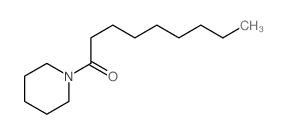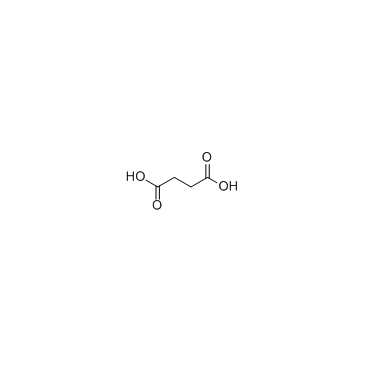112-05-0
| Name | pelargonic acid |
|---|---|
| Synonyms |
nonanic acid
n-Nonanoic acid NONANOIC-D4 ACID NONANOIC ACID FOR SYNTHESIS Nonanoic acid nonyloic acid Nona-N-methyl-4,4',4''-methantriyl-tri-anilinium,Tris-jodid NONANOIC ACID/PELARGONIC ACID NONANOICACID(PELARGONICACID) nona-N-methyl-4,4',4''-methanetriyl-tri-anilinium,tris iodide Nonanoic acid (Pelargonic acid) noncarboxylic acid N-NONYLIC ACID NONANOIC ACID (PELARGONIC) Acid C9,Pelargonic acid Pelargonic Acid MFCD00004433 Nonoic acid EINECS 203-931-2 NO0NOIC ACID |
| Description | Nonanoic acid is a naturally-occurring saturated fatty acid with nine carbon atoms. Nonanoic acid significantly reduces bacterial translocation, enhances antibacterial activity, and remarkably increases the secretion of porcine β-defensins 1 (pBD-1) and pBD-2[1]. |
|---|---|
| Related Catalog | |
| In Vitro | Nonanoic acid upregulates endogenous host defense peptides to enhance intestinal epithelial immunological barrier function via histone deacetylase inhibition[1]. |
| References |
| Density | 0.906 g/mL at 25 °C(lit.) |
|---|---|
| Boiling Point | 268-269 °C(lit.) |
| Melting Point | 9 °C(lit.) |
| Molecular Formula | C9H18O2 |
| Molecular Weight | 158.23800 |
| Flash Point | 212 °F |
| Exact Mass | 158.13100 |
| PSA | 37.30000 |
| LogP | 2.82160 |
| Vapour density | 5.5 (vs air) |
| Vapour Pressure | <0.1 mm Hg ( 20 °C) |
| Index of Refraction | n20/D 1.432(lit.) |
| Storage condition | 2-8°C |
| Water Solubility | NEGLIGIBLE |
Synonym:Pelargonic Acid Section 2 - COMPOSITION, INFORMATION ON INGREDIENTS
Risk Phrases: 34 Section 3 - HAZARDS IDENTIFICATION EMERGENCY OVERVIEW
Causes burns. Potential Health Effects Eye: Causes eye burns. Causes redness and pain. Skin: Causes skin burns. Causes redness and pain. Ingestion: Causes gastrointestinal tract burns. Inhalation: Causes chemical burns to the respiratory tract. Chronic: Chronic exposure may cause effects similar to those of acute exposure. Section 4 - FIRST AID MEASURES Eyes: Get medical aid immediately. Do NOT allow victim to rub eyes or keep eyes closed. Extensive irrigation with water is required (at least 30 minutes). Skin: Get medical aid immediately. Immediately flush skin with plenty of water for at least 15 minutes while removing contaminated clothing and shoes. Ingestion: If swallowed, do NOT induce vomiting. Get medical aid immediately. If victim is fully conscious, give a cupful of water. Never give anything by mouth to an unconscious person. Inhalation: Get medical aid immediately. Remove from exposure and move to fresh air immediately. If breathing is difficult, give oxygen. Do NOT use mouth-to-mouth resuscitation. If breathing has ceased apply artificial respiration using oxygen and a suitable mechanical device such as a bag and a mask. Notes to Physician: Treat symptomatically and supportively. Section 5 - FIRE FIGHTING MEASURES General Information: As in any fire, wear a self-contained breathing apparatus in pressure-demand, MSHA/NIOSH (approved or equivalent), and full protective gear. During a fire, irritating and highly toxic gases may be generated by thermal decomposition or combustion. Will burn if involved in a fire. Vapors may be heavier than air. They can spread along the ground and collect in low or confined areas. Runoff from fire control or dilution water may cause pollution. Extinguishing Media: Use water spray to cool fire-exposed containers. Use water spray, dry chemical, carbon dioxide, or chemical foam. Section 6 - ACCIDENTAL RELEASE MEASURES General Information: Use proper personal protective equipment as indicated in Section 8. Spills/Leaks: Absorb spill with inert material (e.g. vermiculite, sand or earth), then place in suitable container. Avoid runoff into storm sewers and ditches which lead to waterways. Clean up spills immediately, observing precautions in the Protective Equipment section. Provide ventilation. Section 7 - HANDLING and STORAGE Handling: Do not breathe dust, vapor, mist, or gas. Do not get in eyes, on skin, or on clothing. Keep container tightly closed. Do not ingest or inhale. Use only in a chemical fume hood. Discard contaminated shoes. Storage: Store in a cool, dry place. Store in a tightly closed container. Corrosives area. Section 8 - EXPOSURE CONTROLS, PERSONAL PROTECTION Engineering Controls: Facilities storing or utilizing this material should be equipped with an eyewash facility and a safety shower. Use adequate ventilation to keep airborne concentrations low. Exposure Limits CAS# 112-05-0: Personal Protective Equipment Eyes: Wear chemical splash goggles. Skin: Wear appropriate protective gloves to prevent skin exposure. Clothing: Wear appropriate protective clothing to prevent skin exposure. Respirators: Follow the OSHA respirator regulations found in 29 CFR 1910.134 or European Standard EN 149. Use a NIOSH/MSHA or European Standard EN 149 approved respirator if exposure limits are exceeded or if irritation or other symptoms are experienced. Section 9 - PHYSICAL AND CHEMICAL PROPERTIES Physical State: Clear liquid Color: colorless Odor: Not available. pH: Not available. Vapor Pressure: Not available. Viscosity: Not available. Boiling Point: 254 deg C Freezing/Melting Point: 12.5 deg C Autoignition Temperature: Not available. Flash Point: 114 deg C ( 237.20 deg F) Explosion Limits, lower: 1.20 Explosion Limits, upper: Not available. Decomposition Temperature: Solubility in water: 0.3g/l Specific Gravity/Density: 0.900 Molecular Formula: C9H18O2 Molecular Weight: 158.1248 Section 10 - STABILITY AND REACTIVITY Chemical Stability: Not currently available. Conditions to Avoid: None reported. Incompatibilities with Other Materials: Bases, oxidizing agents, reducing agents. Hazardous Decomposition Products: Carbon monoxide, carbon dioxide. Hazardous Polymerization: Has not been reported Section 11 - TOXICOLOGICAL INFORMATION RTECS#: CAS# 112-05-0: RA6650000 LD50/LC50: CAS# 112-05-0: Draize test, rabbit, eye: 91 mg Severe; Draize test, rabbit, eye: 100 uL Mild; Draize test, rabbit, skin: 500 mg/24H Moderate; Oral, mouse: LD50 = >5 gm/kg; Oral, rat: LD50 = >5 gm/kg; Skin, rat: LD50 = >2 gm/kg. Carcinogenicity: n-Nonanoic acid - Not listed by ACGIH, IARC, or NTP. Other: See actual entry in RTECS for complete information. Section 12 - ECOLOGICAL INFORMATION Ecotoxicity: Fish: Pseudomonas putida: Section 13 - DISPOSAL CONSIDERATIONS Dispose of in a manner consistent with federal, state, and local regulations. Section 14 - TRANSPORT INFORMATION IATA Shipping Name: CORROSIVE LIQUID, ACIDIC, ORGANIC, N.O.S.* Hazard Class: 8 UN Number: 3265 Packing Group: III IMO Shipping Name: CORROSIVE LIQUID, ACIDIC, ORGANIC, N.O.S. Hazard Class: 8 UN Number: 3265 Packing Group: III RID/ADR Shipping Name: CORROSIVE LIQUID, ACIDIC, ORGANIC, N.O.S. Hazard Class: 8 UN Number: 3265 Packing group: III Section 15 - REGULATORY INFORMATION European/International Regulations European Labeling in Accordance with EC Directives Hazard Symbols: C Risk Phrases: R 34 Causes burns. Safety Phrases: S 26 In case of contact with eyes, rinse immediately with plenty of water and seek medical advice. S 28A After contact with skin, wash immediately with plenty of water. S 36/37/39 Wear suitable protective clothing, gloves and eye/face protection. S 45 In case of accident or if you feel unwell, seek medical advice immediately (show the label where possible). WGK (Water Danger/Protection) CAS# 112-05-0: No information available. Canada CAS# 112-05-0 is listed on Canada's DSL List. CAS# 112-05-0 is listed on Canada's Ingredient Disclosure List. US FEDERAL TSCA CAS# 112-05-0 is listed on the TSCA inventory. SECTION 16 - ADDITIONAL INFORMATION N/A |
CHEMICAL IDENTIFICATION
HEALTH HAZARD DATAACUTE TOXICITY DATA
|
| Symbol |

GHS05 |
|---|---|
| Signal Word | Danger |
| Hazard Statements | H314 |
| Precautionary Statements | P280-P303 + P361 + P353-P304 + P340 + P310-P305 + P351 + P338 |
| Personal Protective Equipment | Faceshields;full-face respirator (US);Gloves;Goggles;multi-purpose combination respirator cartridge (US);type ABEK (EN14387) respirator filter |
| Hazard Codes | C:Corrosive; |
| Risk Phrases | R34 |
| Safety Phrases | S26-S28-S36/37/39-S45-S28A |
| RIDADR | UN 3265 8/PG 3 |
| WGK Germany | 1 |
| RTECS | RA6650000 |
| Packaging Group | III |
| Hazard Class | 8 |
| HS Code | 2915900090 |
| Precursor 10 | |
|---|---|
| DownStream 10 | |
| HS Code | 2915900090 |
|---|---|
| Summary | 2915900090 other saturated acyclic monocarboxylic acids and their anhydrides, halides, peroxides and peroxyacids; their halogenated, sulphonated, nitrated or nitrosated derivatives VAT:17.0% Tax rebate rate:9.0% Supervision conditions:AB(certificate of inspection for goods inward,certificate of inspection for goods outward) MFN tariff:5.5% General tariff:30.0% |



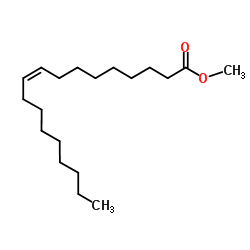
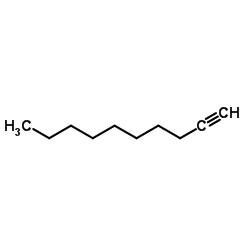




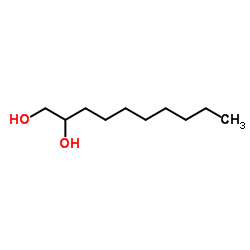

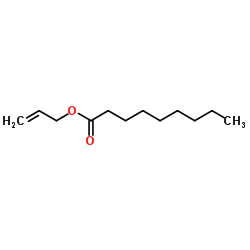
![2-methyl-2-[[(1-oxononyl)oxy]methyl]propane-1,3-diyl dinonan-1-oate structure](https://image.chemsrc.com/caspic/008/10535-50-9.png)


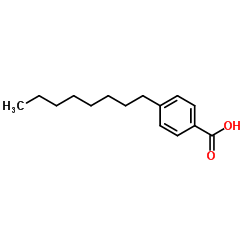
![2,2-bis[[(1-oxononyl)oxy]methyl]propane-1,3-diyl dinonan-1-oate structure](https://image.chemsrc.com/caspic/367/14450-05-6.png)


